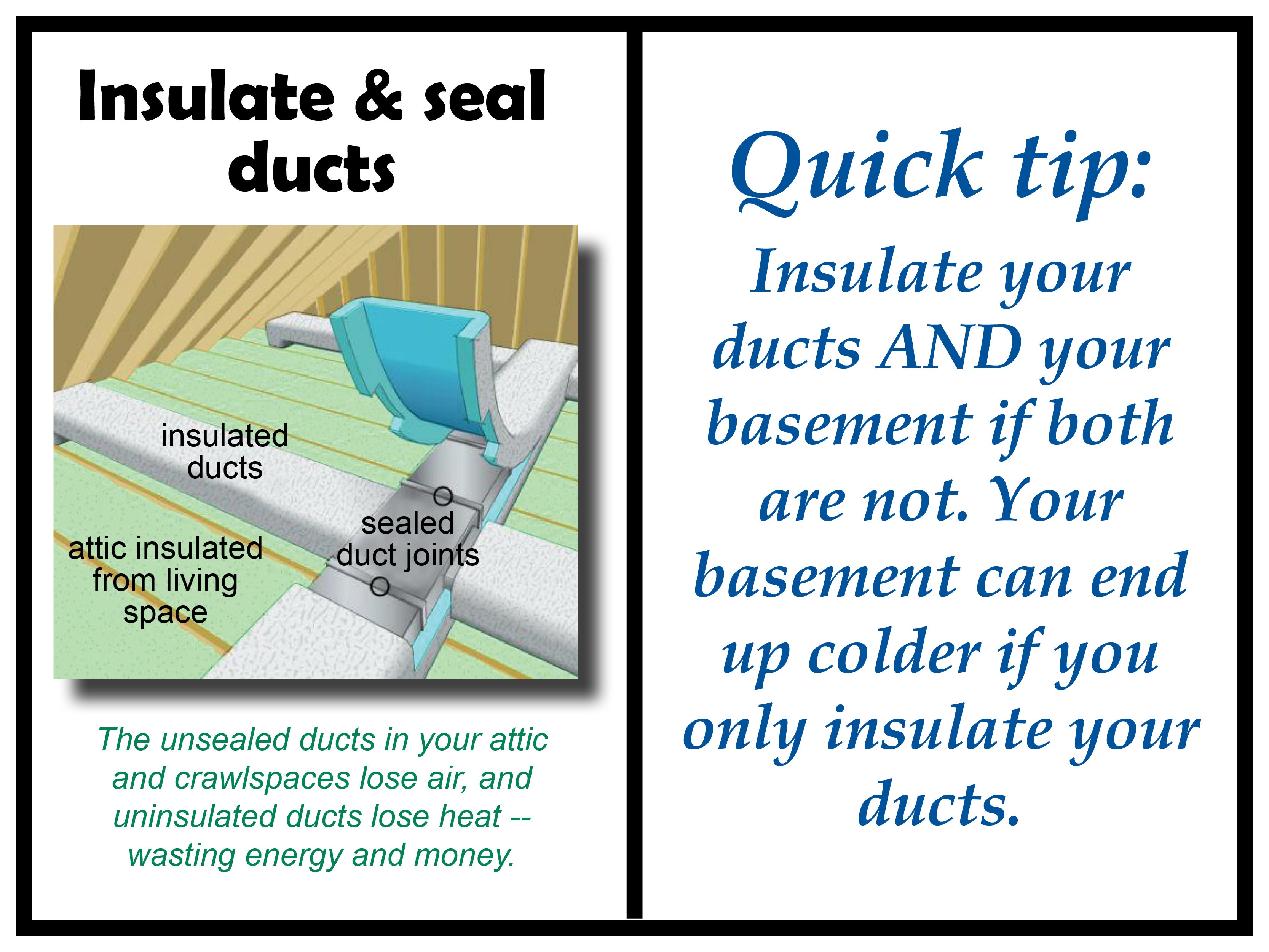Poorly Sealed Air Ducts & Costly Energy Bills
If your house has a forced-air heating and cooling system, you may be losing money and can’t even see it! Probably one of the least thought of but most important systems in your home, your duct system, is a branching network of tubes in the walls, floors and ceilings, and carries the air from your furnace and central air conditioner to each room. Since the only things you typically see of this system are the vent covers in your floor or ceiling, you may never think about its efficiency.
However, if these ducts are poorly sealed or insulated they are likely contributing to higher energy bills. In a typical house, about 20 percent of the air that moves through the duct system is lost due to leaks, holes and poorly sealed ducts.
Sealing ducts is even more important if the ducts are in an unconditioned space such as an attic or vented crawlspace. The heated or cooled air can be forced out of the ducts and lost, and unconditioned air can be drawn into return ducts through unsealed joints.
4 BENEFITS OF AIR DUCT SEALING
A well-designed, properly sealed air duct system can save energy and money, and make your home more comfortable, healthy and safe.
1. SAVE ENERGY AND SAVE MONEY
HVAC ducts that leak heated air into unheated spaces can add hundreds of dollars a year to your heating and cooling bills. Sealing and insulating ducts increase efficiency, lowers your energy bills and can often pay for itself in energy savings.
2. KEEP ROOMS AT A COMFORTABLE TEMPERATURE
Sealing and insulating air ducts can help with common comfort problems, such as rooms that are too hot in the summer or too cold in the winter.
3. IMPROVE INDOOR AIR QUALITY
Sealing HVAC ducts can help improve indoor air quality by reducing the risk of pollutants entering ducts and circulating through your home.
4. KEEP YOUR HOME SAFE BY PREVENTING "BACK DRAFTING"
During normal operation, gas appliances release combustion gases (like carbon monoxide) through their ventilation systems. Leaky ductwork in your heating and cooling system may cause “back drafting,” where these gases are drawn back into the living space, rather than expelled to the outdoors. Sealing leaks can minimize this risk.
HOW TO PROPERLY SEAL DUCTWORK & IMPROVE ENERGY EFFICIENCY
If your ducts are easily accessible, you may be able to make some improvements on your own.
1. CHECK IF DUCTS HAVE BECOME DISCONNECTED AND RECONNECT THEM.
Check if ducts have become disconnected and reconnect them. You can check the duct connections for leaks by turning on your heating and cooling system fan. Seal the duct joints if you feel air leaking around them.
2. USE HEAT-APPROVED TAPE
Avoid cloth-backed, rubber adhesive duct tape as it tends to fail quickly. Instead apply mastic, butyl, foil, or another heat-approved tape that carries the Underwriters Laboratories (UL) logo.
3. MAKE SURE TO SEAL VENT GAPS
Apply foam or mastic to seal vent gaps where ducts penetrate the floors, walls, or ceiling.
4. INSULATE AIR DUCTS IN ATTIC OR CRAWL SPACE
Air ducts located in an attic or crawl space should be insulated. Seal the ducts first, then add an insulation jacket or insulation material.
5. INSTALL A CARBON MONOXIDE ALARM
To stay safe, install a carbon monoxide (CO) alarm to alert you of harmful CO levels if you have a fuel-burning furnace, stove or other appliance, or an attached garage.

